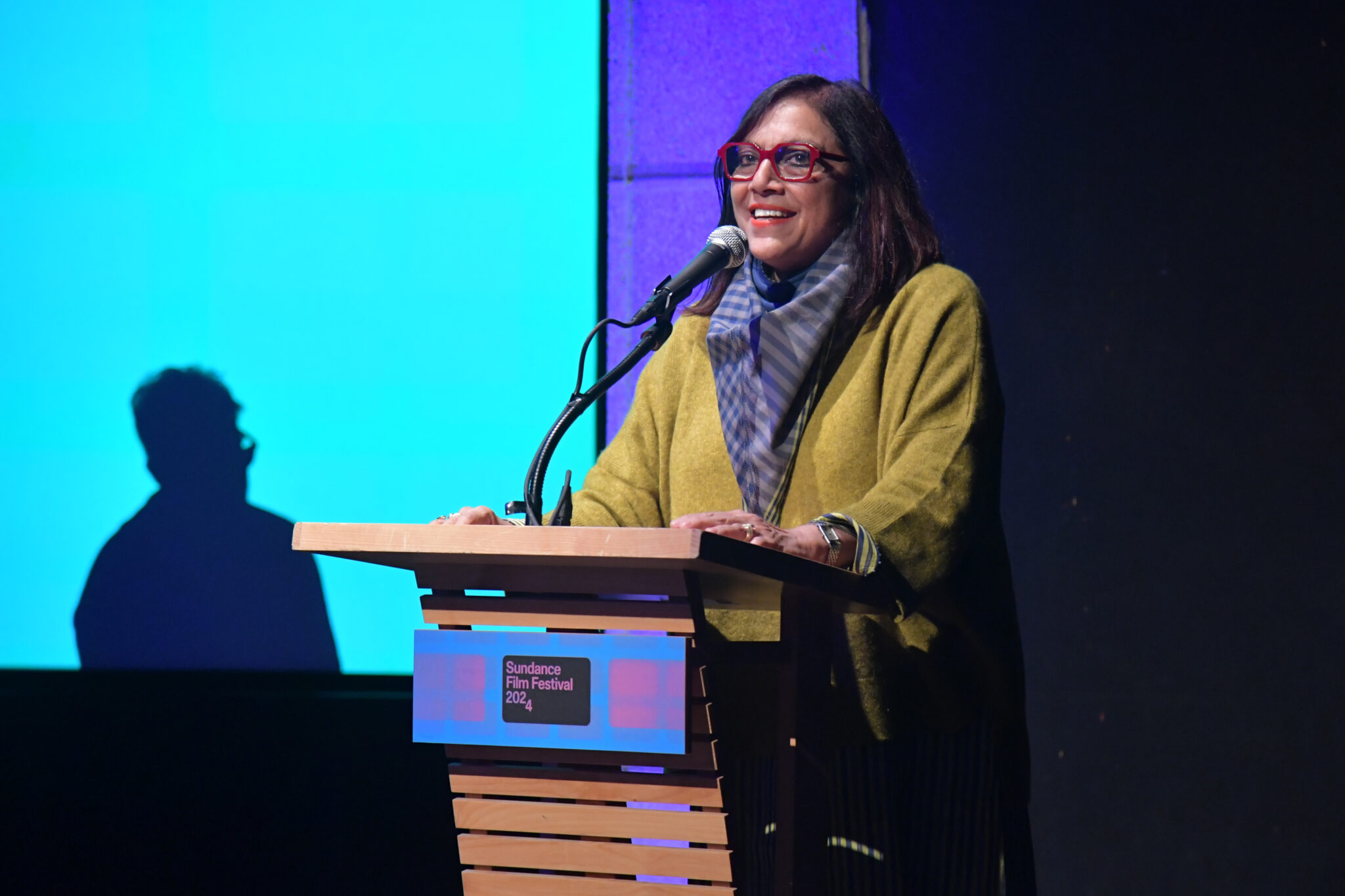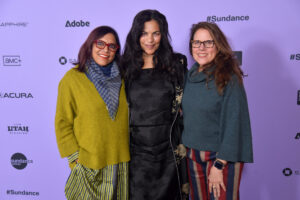By Stephanie Ornelas
Mira Nair first aspired to be an actor, but working as a street performer in India made her realize she was destined for so much more. “I was part of a theater company in New Delhi and Calcutta, and really learned how to tell a story by being on the streets and mostly performing, which was an interesting grounding,” says the director in a recent Spotlight Event with Sundance Collab. “I had no idea this would lead me to filmmaking.”
When Nair joined the online event to talk about “creating magic in cinema,” the first thing she said to moderator Erica Elson was, “I’m surprised I could deserve such attention.” Elson responded the way anyone in the audience would: “I’m not!” Of course no one was surprised. Known for her groundbreaking films, including Mississippi Masala (1992 Sundance Film Festival), Salaam Bombay!, and Monsoon Wedding, Nair has been working to redefine Indian cinema with a fresh perspective, one project at a time. The filmmaker’s warm and hilarious tone is just the tip of the iceberg.
Below, discover some of our favorite quotes from the conversation, including Nair’s advice on choosing collaborators and what inspired her to move from nonfiction to fiction projects.
On finding the right collaborators:
“Filmmaking is a process of taking each other further, rather than just joining the dots and saying ‘yes’ and getting the job done, which is sort of the most unexciting thing for me. The most interesting thing is pushing the envelope and trying to do things you would not have done before. Who can take you further? Who can join the dream, and who can make the dream happen? [With] Salaam Bombay!, they told me a hundred times that it’s not possible. It’s not possible to shoot in the railway stations. It’s not possible to sing in the streets of India. It’s not possible to put an illiterate street kid opposite a movie star and expect the world to be real. But it’s important to work with people who share the same bit of madness and a lot of disciplined passion about how to get it done.”
On shifting from documentaries to fiction:
“As I made four or five of these cinema vérité documentaries, I wanted more control over the storytelling and yet keep the power of what I saw in life — the inexplicability of life, the unexpected turn. [That’s] what I used to see living in the back alleys. And that led me to make Salaam Bombay!, my first fiction film. I wanted to tell it from the beginning but retain what life gave me, which was that the truth is more powerful than fiction sometimes could ever be.”
On directing Monsoon Wedding:
“In a situation like Monsoon Wedding, it was made to see if we could [produce] a complicated film in 30 days. And the way to do it was to make [the film] within this family home. It was actually an experiment in the Dogme[95] method, but in Indian style with lights and music. We did a workshop with a great legendary actor, Naseeruddin Shah, who plays the father, Shafali [Shah], who was just beginning her career at the time, and several other unknowns. [It was about] bringing everyone together in eight days within the set of the home we were shooting in and creating a sense of family, creating an atmosphere where we could play the fool, where we could take risks, where there was safety, and we achieved that.”
On restoring Mississippi Masala:
“In early 2020, a British film festival got in touch with me to show Mississippi Masala. I looked for a print to send them, but it had been more than 20 years, and there was no print that anyone could find easily. That detective work led me to this music company called SESAC, which had one 35mm print that they very kindly lent me. The film won the Audience Award, and it suddenly came back to life in a very real way, especially for the next generation. That led us to investigate further and we went back to this music company who didn’t know what to do with [the print]. But the owner knew my films and loved them like a fan. It was so amazing. So, after a few months of legal business, he gave us the print and the rights. Mine was a kind of fantasy story. It was just top-dollar fantastic. Then Janus [Films] released it in theaters, and now it’s out into the world.”
On the current state of Indian cinema:
“We went through years of being utterly twisted about not revealing things that should be perfectly direct and organic, but also being deeply patriarchal about what is good, what is allowed, and especially what is bad. Then, these schematic views of a good woman versus a bad woman became part and parcel of our mythology, of our calendar, of our storytelling. And as life became more and more repressive, the desire to show that became more and more twisted. I’m just giving a general point of view of how it came to such a barbaric, almost bestial portrayal between men and women for much of our storytelling.
“That was what I also sought to deeply counter, to hold a mirror to. We came from the place that showed us how to live. And we have become so far from that and also so damaging to the consciousness of men and women and the relationship that should exist between us. That has been a lot of my push in my attitude towards my work. That’s why it’s very rare to find what Shuchi Talati, the director of Girls Will Be Girls, did — something direct, something lovely, something delicate, something truthful. It’s beautiful to see. Hopefully this is a ripple that will create an ocean. But now, even our documentary films are holding that mirror so powerfully. It’s very interesting in terms of looking for change.”
To go deeper, check out Sundance Collab’s online directing courses and sign up for our weekly newsletter for the latest events and updates.










